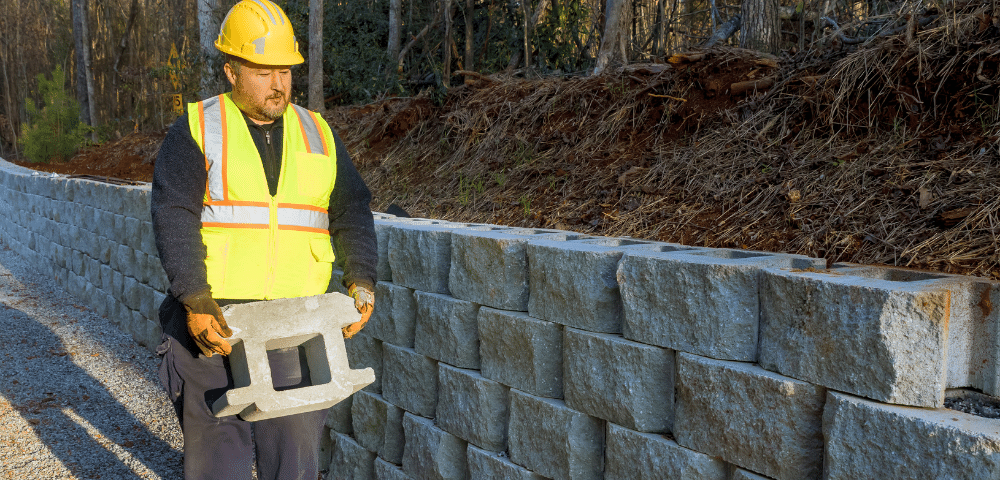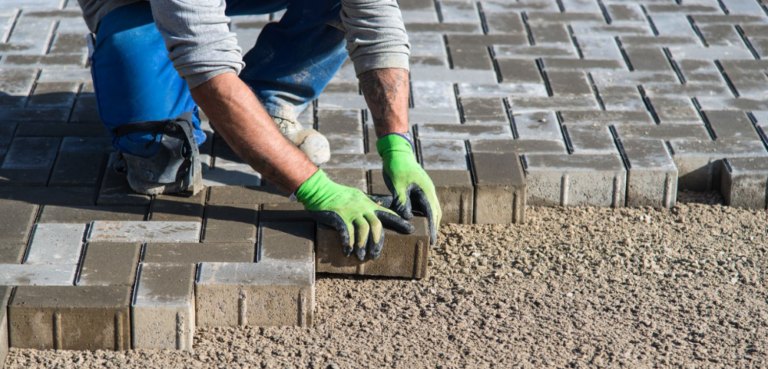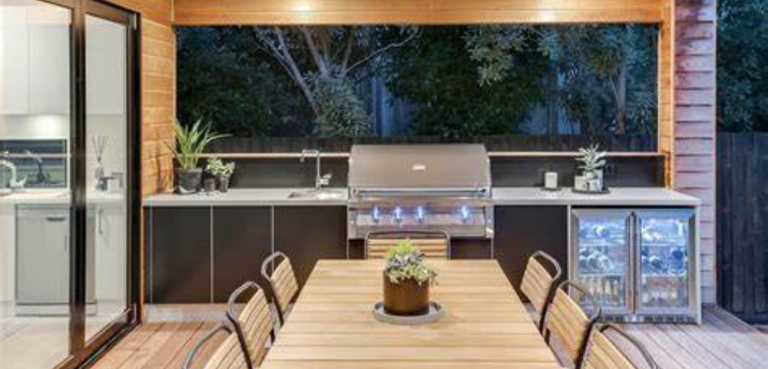Retaining walls wear many hats: they combat erosion, stabilize slopes, and beautify landscapes. If you’re thinking of adding one, you’re spoilt for choice with materials. Yet, if durability, affordability, and adaptability are on your wishlist, large concrete blocks for retaining walls might just tick all the boxes. In this piece, we’ll delve into why these blocks are a top pick for retaining walls and shed light on their characteristics, upkeep, and lasting power.
As our company Line of Art Construction specializes in building retaining walls with large concrete blocks, we’ll also be happy to explain why you should trust us for this project.
The Need for Retaining Walls:
Retaining walls serve a vital function by holding back soil and managing sloped terrains. They can also add an aesthetic touch, like forming terraced gardens or emphasizing specific plants. A well-constructed retaining wall not only enriches the landscape but also protects the soil and prevents unfortunate events, such as landslides.
If you need a retaining wall to solve any of these problems, then choosing large concrete blocks can be a smart choice.
Why Choose Large Concrete Blocks?
Large concrete blocks offer several advantages when it comes to retaining walls:
- Durability: Concrete is known for its durability. When you choose large concrete blocks, you’re investing in a retaining wall that’s built to last. These blocks resist weathering and erosion, maintaining their structural integrity for years to come.
- Flexibility: Large concrete blocks can be arranged in a variety of configurations to suit your specific needs and preferences. This flexibility in design makes them an ideal choice for any landscape.
- Cost-Effective: Compared to other materials, large concrete blocks often come in as a more budget-friendly option. The life-cycle costs, including maintenance and replacement, are also usually lower with concrete.
- Low Maintenance: Once installed, large concrete blocks require minimal maintenance. They’re robust enough to withstand the elements and don’t need frequent repairing or replacement.
- Aesthetically Pleasing: While functional, large concrete blocks for retaining walls also offer aesthetic appeal. They can be textured, colored, or patterned to blend in with the surrounding landscape or to create a visually striking feature.
Features of Large Concrete Blocks for Retaining Walls
Large concrete blocks come in a variety of sizes and dimensions, which means that they can be used to build retaining walls of any height and structure
The blocks feature an interlocking design that ensures stability and reinforces the strength of the entire wall. Moreover, they are available in a variety of textures and finishes, including smooth, rough, or patterned, allowing them to integrate seamlessly with the landscape’s design.
Maintenance and Longevity:
Maintaining the health and appearance of your retaining wall is a crucial part of ensuring its longevity. The good news is that large concrete blocks require minimal upkeep compared to other materials. Below is a comprehensive guide to the maintenance of large concrete block retaining walls and what you can expect in terms of their durability.
- Low Maintenance: One of the major advantages of large concrete blocks is their low maintenance requirement. Once installed, they don’t require any special attention or frequent upkeep. Regular cleaning to remove dirt and debris is usually enough to keep them in top shape.
- Long Lifespan: Concrete blocks are renowned for their longevity. They can last for many decades without losing their structural integrity or aesthetic appeal.
- Resistance to Weather and Wear: These blocks are designed to withstand various weather conditions, from extreme heat to freezing temperatures. Their resistance to wear and tear also contributes to their long lifespan.
- Minimal Repair and Replacement: Due to their durability and resistance to weather conditions, large concrete blocks rarely need repairing or replacing. This reduces the overall cost of ownership and ensures that your retaining wall continues to function effectively for a longer period.
- Color Retention: Large concrete blocks have excellent color retention properties. . Even after soaking up sun rays or weathering different outdoor elements, they stay true to their original shade. This means your landscape stays looking fresh and vibrant for longer.
Conclusion
Constructing a retaining wall is a significant decision and demands careful thought. If you’re mulling over material options, large concrete blocks for retaining walls stand out. They’re not only budget-friendly and sturdy but also versatile and low-maintenance, suiting an array of wall designs. At Line of Art Construction, our hands-on experience with these blocks spans years, ensuring you get top-notch service. Interested in crafting your ideal retaining wall? Reach out to us for a chat, a quote, and let’s turn that vision into reality.
Frequently Asked Questions
What are the primary purposes of retaining walls in landscaping?
The primary purposes of retaining walls in landscaping are to prevent soil erosion, stabilize slopes, and create level areas in uneven terrains. They also serve aesthetic functions, helping to define spaces and create visual interest in a landscape. Additionally, they can provide support for pathways and other landscape features.
Which materials are most commonly used to construct retaining walls?
The most commonly used materials for constructing retaining walls include concrete blocks, natural stone, timber, and poured concrete. Each material has its own advantages and aesthetic appeal, making the choice often based on the desired look and functionality of the wall.
How often should retaining walls be inspected for signs of wear or damage?
Retaining walls should be inspected at least once a year for signs of wear or damage. After extreme weather events, such as heavy rains or earthquakes, a prompt inspection is advisable. Regular checks help ensure the wall’s integrity and longevity.




